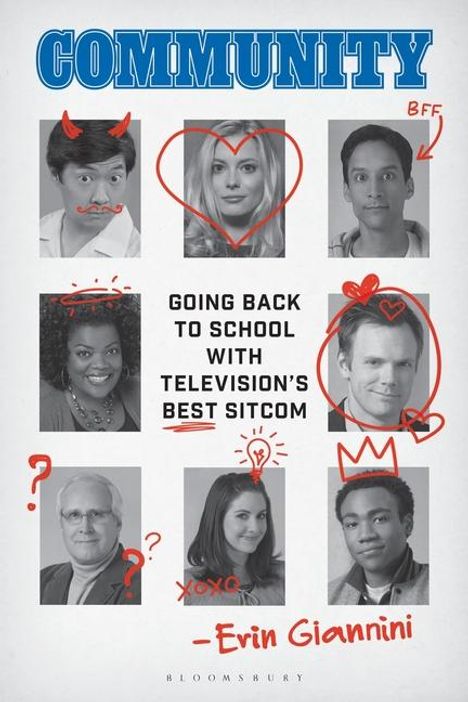Erin Giannini: Community, Gebunden
Community
- Going Back to School with Television's Best Sitcom
(soweit verfügbar beim Lieferanten)
- Verlag:
- Bloomsbury Academic, 11/2025
- Einband:
- Gebunden
- Sprache:
- Englisch
- ISBN-13:
- 9781538191897
- Artikelnummer:
- 12298536
- Umfang:
- 232 Seiten
- Gewicht:
- 454 g
- Maße:
- 229 x 152 mm
- Stärke:
- 28 mm
- Erscheinungstermin:
- 13.11.2025
- Hinweis
-
Achtung: Artikel ist nicht in deutscher Sprache!
Klappentext
A fun and engaging overview of the popular television series Community as the show fulfills its own prophecy of concluding with six seasons and a movie.
Sitcoms are unique to television. In many respects, they define US television from I Love Lucy to Superstore . Given sitcom's longevity and adaptability, the only surprise is that it took until 2009 for someone to create a series that both skewers and honors the sitcom genre: Community .
In Community*: Going Back to School with Television's Best Sitcom* , Erin Giannini examines the cultural phenomenon that is Community , a series about a community college and, in the series own words, "the goofballs who run around stirring up trouble, and the eggheads that make a big deal out of it." It's a meta series with an active fandom (enough to justify a follow-up film) and features an eclectic cast. Created by Dan Harmon based on his brief experience in community college, it appears on the outside to be a typical sitcom: lovable rogue Jeff Winger is forced to go back to college to earn the credentials he lied about and falls in with a motley group of quirky new friends. Yet the series almost immediately deconstructs this by having the character of Abed Nadir tie in the group dynamic to pop culture touchstones, from mafia film Goodfellas to bottle episodes and clip shows.
Giannini explores how the series embodies the cusp between traditional television and the streaming era. Highlighting Community's influence, the way it differentiated itself from other sitcoms and yet embraced the genre, the comedic generational divide embodied by the escalating tension between Chevy Chase and Dan Harmon, the ascendance of Donald Glover, and much more, this is a must-read for fans of the cult-favorite show.


